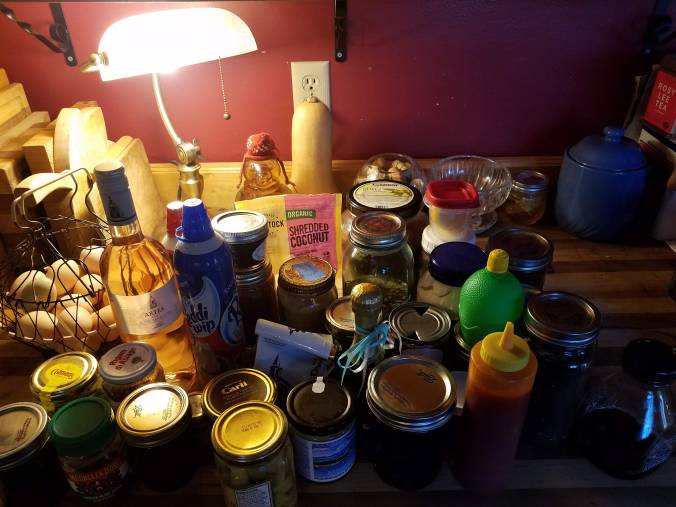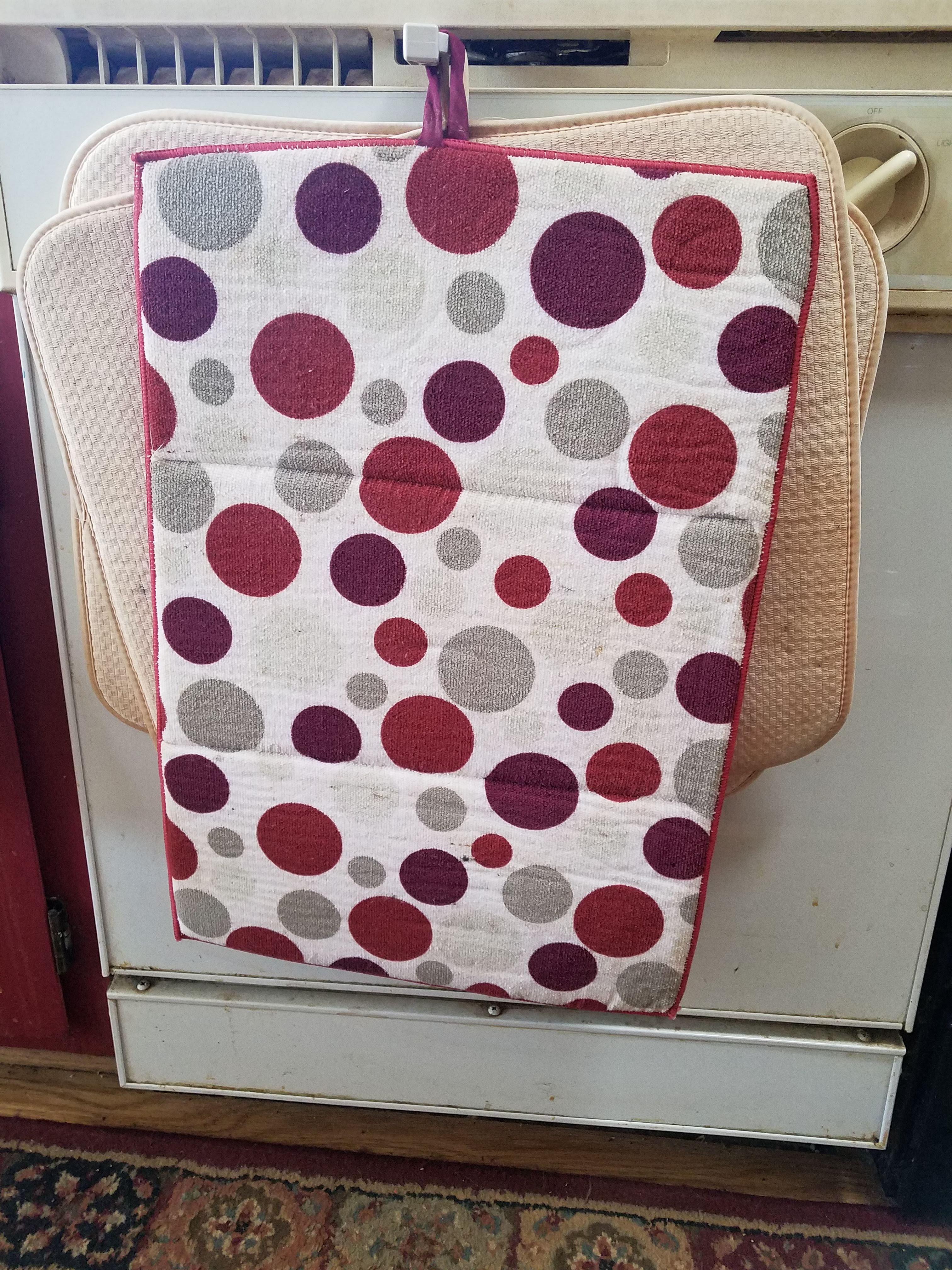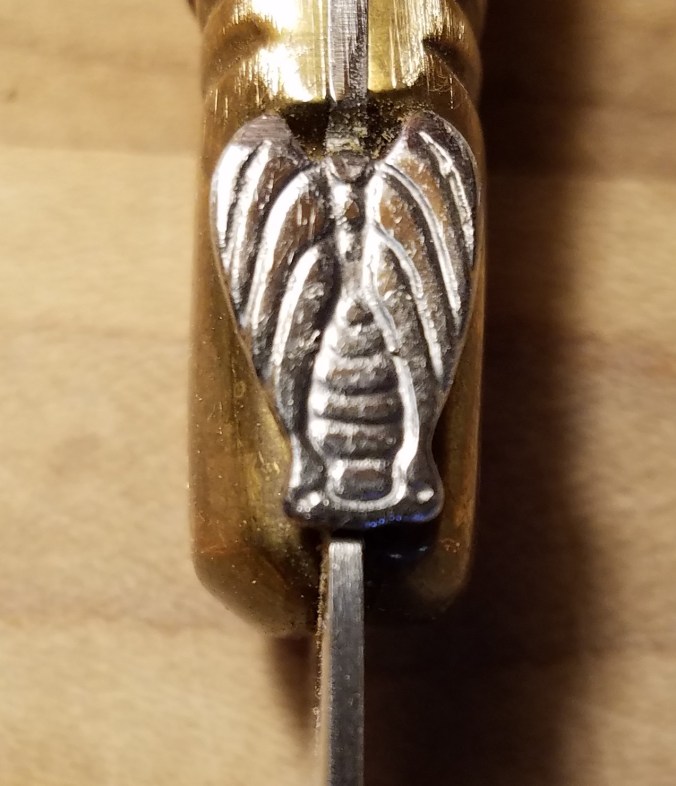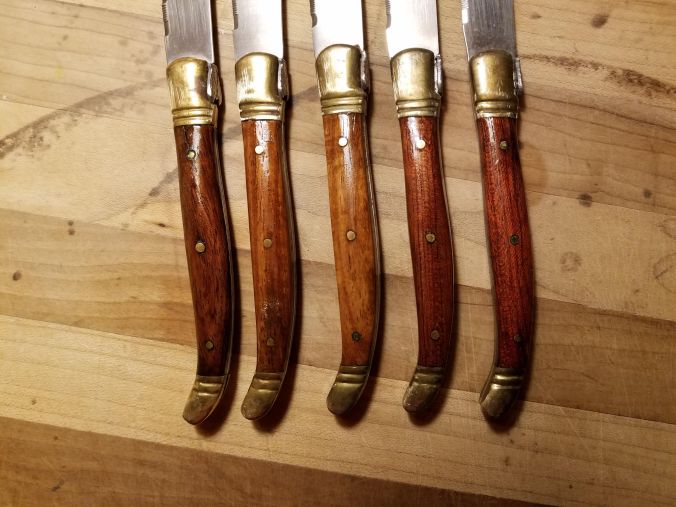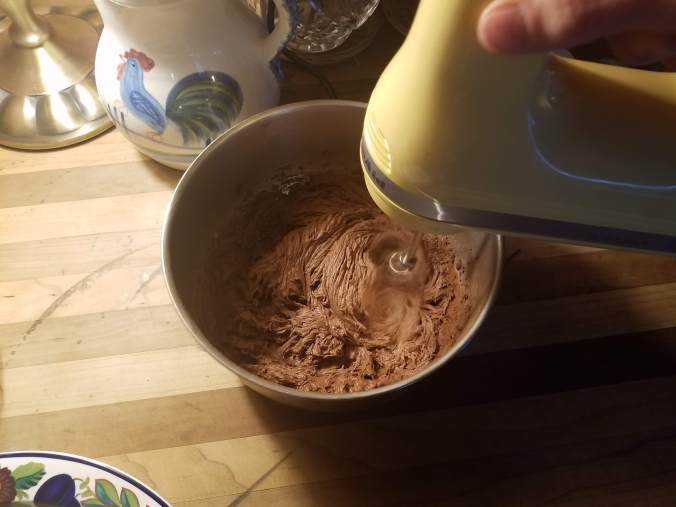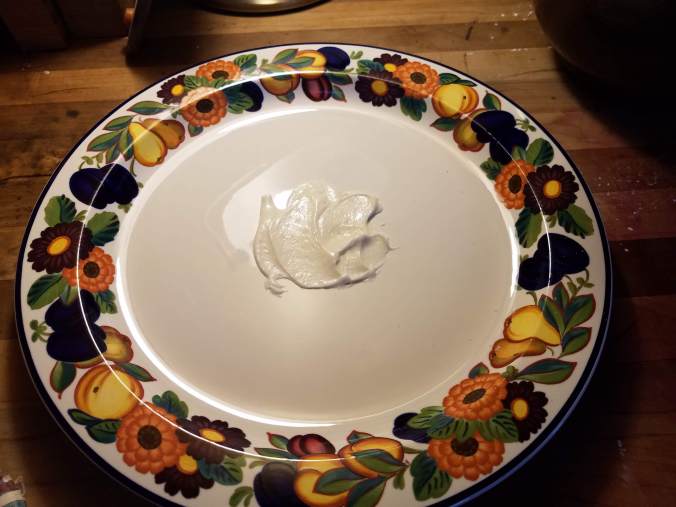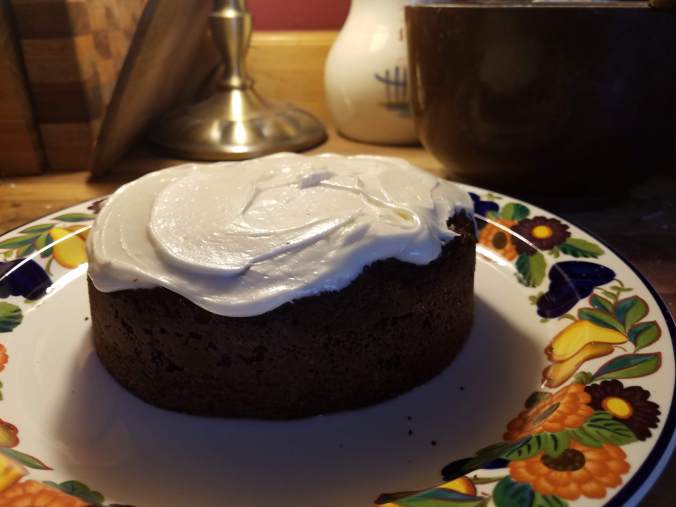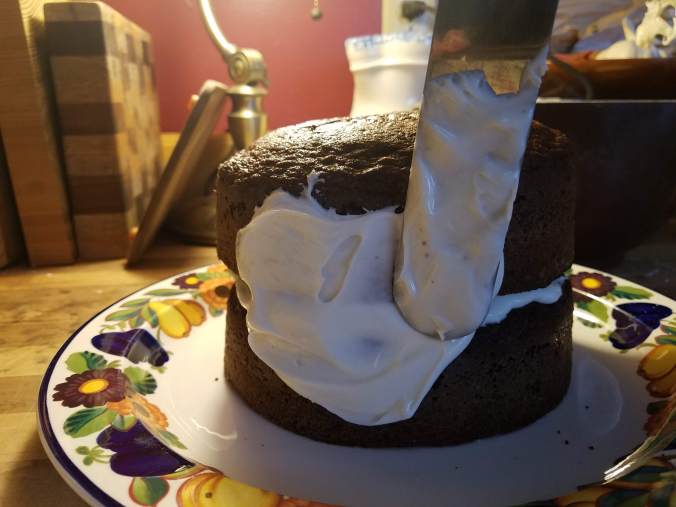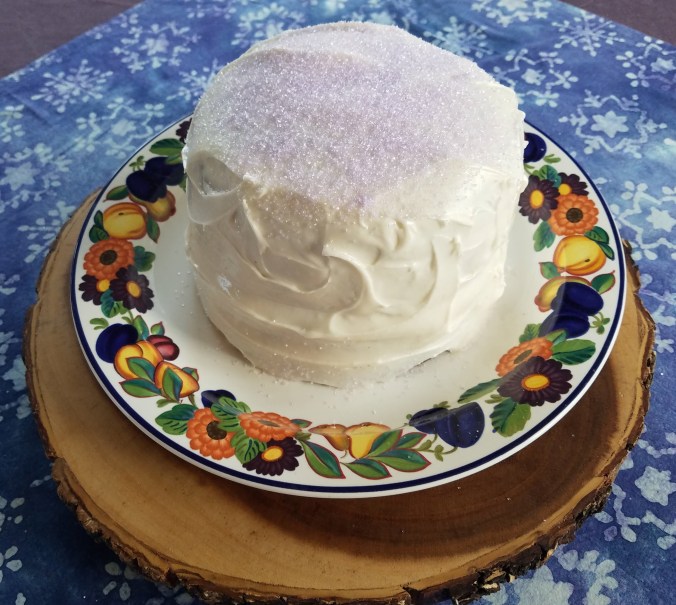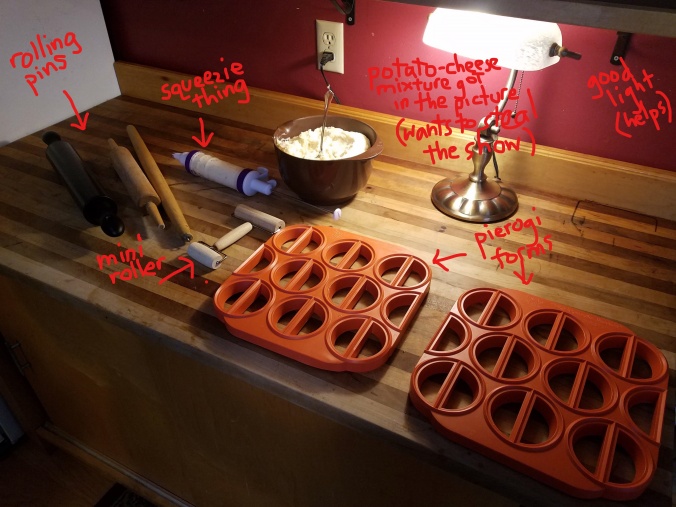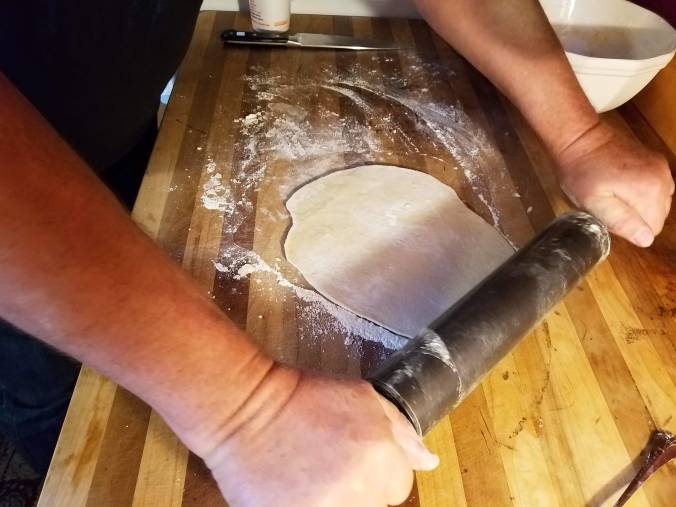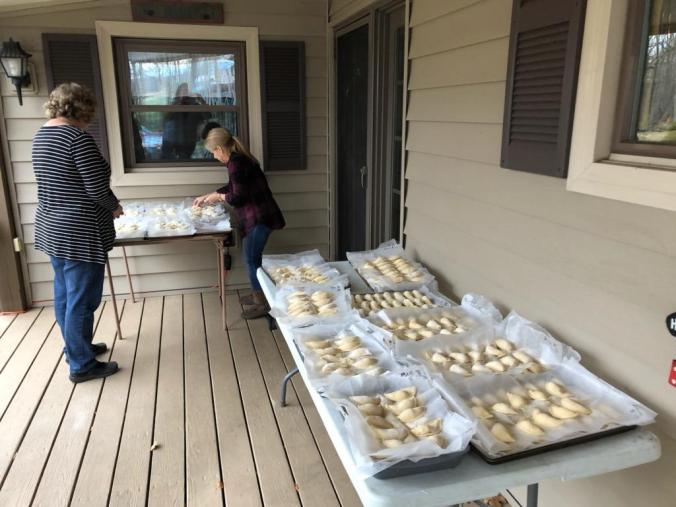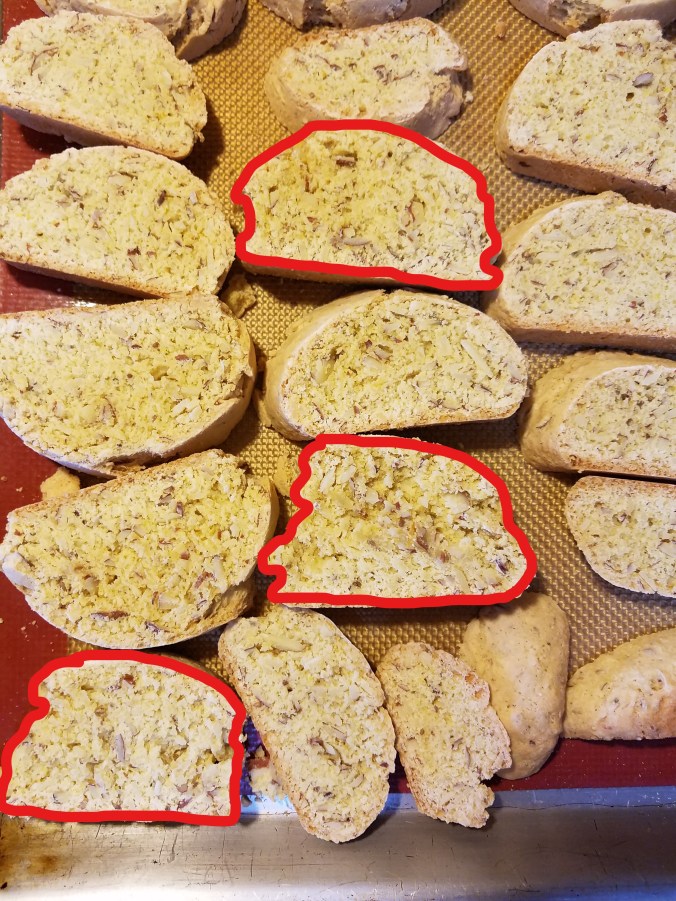Yesterday after I put the ingredients together in a bowl for meatloaf, I asked Samuel if he would mix it up for me since my shoulder was acting up pretty bad. He washed his hands, stuck them in the bowl and began mixing up the couple handfuls of oats, two eggs, milk (to moisten the oats), a small hunk of finely grated asiago (for the cheese this time because I didn’t have any romano – I figured it was close enough), a small bunch of chopped fresh parsley, a pound of ground beef (it came in a weighed package!) and salt and pepper.
He squished and turned and squished some more and then said, “Seems wet to me. Is it always this wet?” He was right. This is a risk when you pour the milk directly from the gallon.
I reached for the breadcrumbs in the pantry, said, “This’ll fix that,” and sprinkled some in. He mixed some more, it still looked a tad wet, so I sprinkled some more breadcrumbs in. Good now. He formed the loaf in my cast iron skillet, and I turned on the oven a while later so that everything would be ready when he returned home. I misjudged and the meatloaf baked a while longer than was perhaps ideal, but that meant a very delicious crispy bottom crust – and the inside was certainly not dry!
At one point during meatloaf-making, Samuel had said (half under his breath), “Do you measure anything?”
Of course I do! But it got me to thinking about measuring, about “cookery,” about ease in the kitchen – the trial and error of learning to make food, the imprecision, substitutions and playing around that often work, the times I make do or figure out what’s for supper by looking in the fridge and seeing what speaks to me, the side effects of being as old-fashioned about it as I am.
I also thought about Malcolm Gladwell’s 10,000-hour rule, how he says in Outliers that those who have achieved a high level of competency in any area – whether a concert pianist, a hockey player, a computer programmer – have simply, over the years, put in the time. “Highly competent” is a subjective assessment in the kitchen (and I myself have miles to go before I’m close to that), but I wondered if my ease, my sense of when it looks right or feels right or smells done, my willingness to flex with ingredients sometimes (such as using a different cheese in the meatloaf this time) has to do simply with having spent a lot of time over many years preparing food in a kitchen. It’s probably why my mom and my sister are such great cooks.
This past week my dear friend John gifted me a book called The Lost Art of Real Cooking.

He mentioned it was coming by saying, “I’m sending you a hard copy of a book that reminded me of you…. When I read part of it I could hear you talking 😊” Now that I have it, I wonder which part. Maybe, knowing my meatloaf methodology, he liked: “This book is an effort to loosen up.”
Maybe, knowing how much joy I get from feeding people: “There is, it cannot be denied, unspeakable pleasure in providing sustenance for others with the labor of one’s own hands.”
Maybe it was this part (because I have said as much!): “Yes, this will be hard work. But can you see the irony of people who save time and energy with electric gadgets and then traipse off to burn calories in the gym? Why not boldly brandish a whisk instead? Your egg whites will be all the more happy for it, as well as your biceps.” (Myself, I would like to add an exclamation point after biceps!)
Maybe this part (because I have also said as much!): “We are not averse to measurements per se, they are often necessary, particularly with baking. But to insist that a quarter teaspoon of some particular seasoning is correct while anything more or less, or, heaven forfend, a substitution, altogether amounts to culinary heresy, this is just too much to bear.”
Maybe he’s thinking of how much time I spend making homemade manicotti (including the crepes that wrap up the cheese) or waiting for bread to rise or watching the tomato soup slowly cook down to the point of straining out the seeds and skins, or how delighted I am that the basil I planted in May gives flavor to our pizza in August, or how satisfied I feel when the granola comes out crunchy because it sits in the oven overnight. “So before you continue, Gentle Reader, if you cannot abide long hours in the kitchen, this is no book for you….Cooking slowly with patience is inherently entertaining and the food it yields tastes better, costs less, and connects you with the people you feed in a way that a prefabricated meal can never hope to do.”
Beyond that, I’d say that “cooking slowly with patience” connects you to the earth, to the seasons, to your own senses, hands, arms, legs, back and brain, to the real plants and animals that keep you alive and to the many who came before you, patiently working with what they had, feeding the people they loved, honing the skills they learned valuable, far-reaching lessons from. In a broader sense, isn’t that what life is all about: making the best of what you have, taking care of the people you care about and increasingly gaining knowledge and understanding that better equips you to carry on (let us hope) with grace and compassion?
Imagine my joy when, just a few days ago, while still digesting the comforting and (truth be told) vindicating message of this book (thank you, John), I read the following poem by Sarah Silvey (yes, the same Sarah who drew the teeth-brushing/berry-eating bear peeking/peeping in on Mom). Out of the blue she produced a perspective on working in the kitchen that took my breath away, so closely did it mirror my own experience, so well did it express the unspeakable pleasure and unexpected benefits that come from a simple task in the kitchen. Thank you, Sarah.
Sometimes I enjoy doing things the hard way
The long, difficult way
By hand
Without electricity
Without advanced tools.
It connects me to the past
To ancient humans
Struggling to make ends meet
To those who worked hard perfecting a craft.
I tried to saw dovetails with hand tools
When I made my desk.
It was hard work.
It took days.
I was sore, my carpal tunnel flared
And when I finally tried to hammer the pieces together
It didn’t fit.
But I learned
how much work
Every piece of furniture should be.
I can appreciate
The ease of modern living
Machine made items shipped to your home.
I can appreciate too
What we’ve lost.
You forge a connection
With things you built
With food you grew, harvested, and processed.
Even doing something as simple as washing your car by hand
You learn more about the state that car is in
Notice its scratches and weak points
Restore the sparkles in its paint.
I processed five gallons of grapes by hand.
When I sat in my kitchen
Peeling grapes
I mimicked the motions of my ancestors.
Women have peeled grapes
Into bowls in their laps
For thousands of years.
They spent hours upon hours
Processing the bounty of summer
To stave off winter’s bite.
They told stories while working
Sang songs
And some just worked
Alone, in quiet thought.
Every grape I handled
Taught me more about this food.
I learned to tell a wormy one by feel
Its rough scar tissue
Sent a shudder through my marrow.
I learned what every color tastes like.
I learned to love the Concord smell
Rich and strong and sweet and tangy.
If I’d used tools
I wouldn’t have had to stand at the sink for so long.
I wouldn’t have had the quiet thinking time
I wouldn’t have been able to practice my working posture
Relaxed enough to fight fatigue, yet always moving.
I noticed I was taking much longer than necessary
Due to my need to get every grape, save every grape, not waste
Anything
And I knew someone watching me would have felt frustrated
Just as I felt
When I watched my mother process peaches for the freezer
Always graceful, always painfully slow, yet inevitable.
After two days of work
The peaches would be all blanched, peeled, sliced, sugared, and frozen.
I felt her echo in my slow fingers
Of her, and a million women before her
All of us preparing the harvest
So we might have something sweet
For winter.

